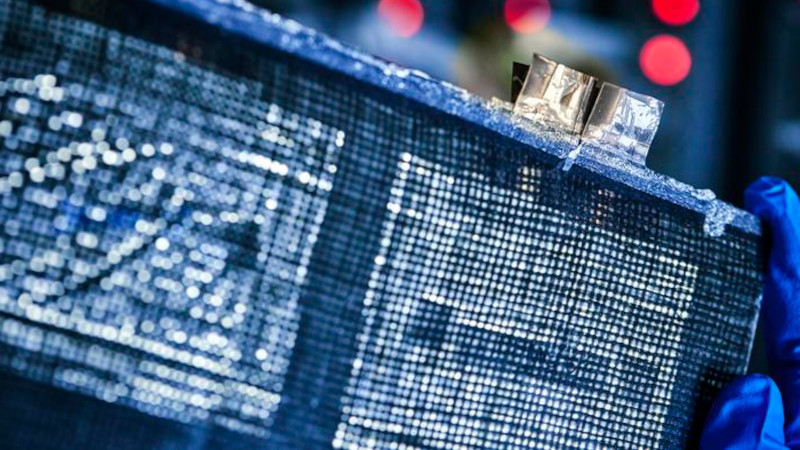The world’s most durable battery, developed by scientists at Chalmers University of Technology (CTH) in Sweden, could increase the range of electric vehicles by 70% and pave the way for mobile devices thinner than a bank card. The uniqueness of the technology lies in the use of carbon fiber as electrodes, which eliminates metals such as copper and aluminum, which increase mass. This could be a decisive factor in overcoming a key barrier to large-scale electrification of transport – limited range.

Image source: Henrik Sandsjö / Chalmers University of Technology
Despite the growing popularity of electric vehicles, the transition to fully electrified transportation free of fossil fuels remains a challenge with many unknowns. This problem is especially acute in the field of long-distance transportation carried out by sea and air transport, which requires energy-intensive but light fuel that can provide the required energy supply. Traditional batteries, although more environmentally friendly, are significantly inferior to fossil fuels in terms of energy intensity and weight.
Structural batteries offer an elegant solution to this multi-faceted problem due to their ability to serve as a load-bearing function in the device structure, transforming from “dead weight” into a functional element. For vehicles, this means not only a reduction in overall weight, but also a reduction in energy consumption, which directly affects the increase in range.
A research team led by Leif Asp, professor of materials science and computational mechanics at CTH, has confirmed that carbon fibers can store electrical energy and be used as electrodes in lithium-ion batteries. By 2021, the team of scientists had increased the strength and electrical capacity of the battery to an energy density of 24 Wh/kg, which was increased to 30 Wh/kg in new reports.
While these values are still inferior to standard lithium-ion batteries, it is important to note that structured batteries do not need to reach the same high capacity levels to be effective. Their main advantage lies in their versatility and ability to be integrated into the device design, which allows for a significant reduction in overall weight and increased energy efficiency. “Our calculations show that electric vehicles could achieve up to 70% more driving range than today if they were equipped with competitive structural batteries,” Asp said in a statement.
The structural battery developed at CTH is made from a composite material and uses carbon fibers for the positive and negative electrodes. In previous versions of the battery, the positive electrode core was made of aluminum foil. In the new version, the researchers took an innovative approach and coated carbon fibers with lithium iron phosphate (LFP), which significantly increased the efficiency and durability of the battery. The carbon fiber in this design serves not only as an electrode, but also as a reinforcing element, a current collector and a basis for storing lithium at the cathode, while simultaneously acting as an electrical collector and active material in the anode. This makes it possible to create a battery without using traditional materials such as copper or aluminum.
The researchers were also able to increase the rigidity of the battery, allowing it to withstand loads comparable to aluminum, but at significantly lower weight. “You can imagine that mobile phones as thin as a credit card or laptops that weigh half as much as today will appear very soon. Major investments will be required to meet the complex energy needs of the transportation industry, but this is where this technology can make the most significant impact,” Asp said.
Another innovative aspect of the design is that the lithium ions in the battery move through a semi-solid electrolyte, which significantly reduces the risk of fire – a critical safety benefit, especially in vehicles. However, at the moment the battery cannot provide high power, and this area has become one of the priorities for the team of scientists.